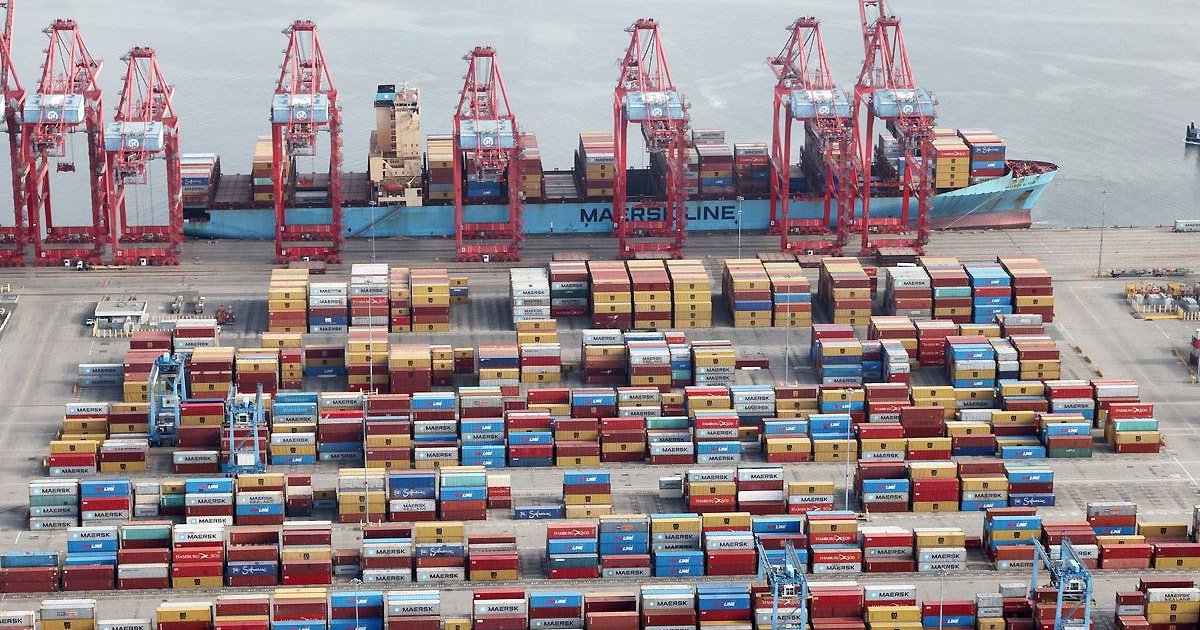
North America’s auto industry is already weary from two years of supply chain troubles and pipeline interruptions on parts and vehicles. But things could now get a bit worse.
The labor contract between the Pacific Maritime Association and the International Longshore and Warehouse Union expired July 1, and that could squeeze inbound inventories even tighter.
The contract covers 22,000 workers at 29 West Coast ports that stretch from San Diego to Bellingham, Wash. Negotiations are underway, and the ports — already under enormous pressure to process cargo amid COVID-19 — are still operating. But the union is working without a contract.
The association and union issued a joint statement ahead of the contract’s expiration assuring onlookers that the ports would remain operational and that they both “understand the strategic importance of the ports to the local, regional and U.S. economies, and are mindful of the need to finalize a new coast-wide contract as soon as possible to ensure continuing confidence in the West Coast.”
The union maintains that a solution will be reached. “The ILWU has been negotiating with the PMA for decades, and we always get an agreement,” union President Willie Adams said in a statement.
Of most concern are the ports at Los Angeles and Long Beach, located side by side in the San Pedro Bay Port Complex in Southern California. Together, they receive 40 percent of U.S. imports from Asia and are considered the “anchors” of West Coast port traffic.
Los Angeles is the busiest port in the Western Hemisphere.
Despite the joint pledge to finalize a new contract swiftly, there are concerns union members may push back against working outside of a contract.
“The longer the talks continue, the more potential there could be for a slowdown,” said Charles Klein, Detroit station manager for freight forwarding company OEC Group. A worker slowdown is a tactic used by employees to reduce productivity while still performing their duties.
For the auto industry, the implications of a slowdown could be tighter supplies of vehicles than U.S. retailers are already coping with.
“A slowdown for even a week and a half would have an impact down the line,” Klein said, especially on top of “thousands of containers” that are already delayed in L.A. and Long Beach because of the record number of goods shipped three months ago that are just now moving through the system.
“All of these Tier 1 and 2 suppliers have been struggling for the past year just with congestion,” Klein said. “So anything on top of that to exacerbate the problem is not good as people wait for new cars.”
Auto parts are the No. 2 import at Los Angeles. In 2021, they consumed 318,825 TEUs. TEU is shipping parlance for “twenty-foot equivalent unit” — meaning the capacity of a 20-foot-long container.
Assembled vehicles arrive in ships, not containers. The auto terminal at Los Angeles, which handles Nissan, Infiniti and Mazda vehicles, brought in 101,047 units in 2021. Toyota Logistics operates one of the terminals at the Port of Long Beach.
The contract negotiation is not likely to hang on wage issues. According to a statement issued by Pacific Maritime Association CEO Jim McKenna, “ILWU members earn nearly $195,000 a year on average, roughly three times the U.S. median household income.”
They also have fully employer-paid health care, pension and retirement plans and pay guarantees, McKenna said.
More likely, the contract sticking point will be automation. Port operators are exploring new ideas in automating cargo-handling, including autonomous vehicles that move containers around the terminal and cranes that allow big containers to be stacked more densely.
Automation is seen as a way to modernize without having to expand a port’s physical space — which is a looming issue for the L.A. complex as it forecasts reaching full capacity by 2028.
McKenna and the association are in favor of automation. According to a recent study commissioned by the association, automation will “enable West Coast ports to remain competitive” and “facilitate growth in both cargo and jobs.”
The Port of L.A. has seven container terminals, two of which already have elements of automation that have “boosted throughput and cut supply-chain delays,” according to the study.
The study also stated that the union has “accepted the terminals’ right to automate, but, worried about job losses, it has resisted efforts to introduce the technology.”
Said Klein: “They’re probably trying to decide where automation and labor fit together. How to keep a robust labor force with automation is going to be tough for them to figure out.”
The association says that automating some functions will not cannibalize the work force. The association, the union and the Port of Los Angeles are already collaborating on a training facility to “re-skill” union members to prepare them for future work on the waterfront, McKenna said.
Keeping competitive with ports that already use automation will be key to West Coast ports maintaining their “gateway” position. Both ports list China as their top trading partner for 2021.
“West Coast ports help move nearly half of all Asian imports destined for American consumers and businesses — the first link in a complex supply chain that supports millions of jobs and keeps the United States growing,” McKenna said.
In anticipation of West Coast labor trouble, some shippers have started planning “multiple routings” to avoid congestion in L.A., Klein said. This tactic could cause congestion elsewhere, such as on the East Coast, but shippers would still be better able to predict transit times.
“The main thing,” he said, “is people don’t want to be stuck in a stack for three months on the West Coast.”